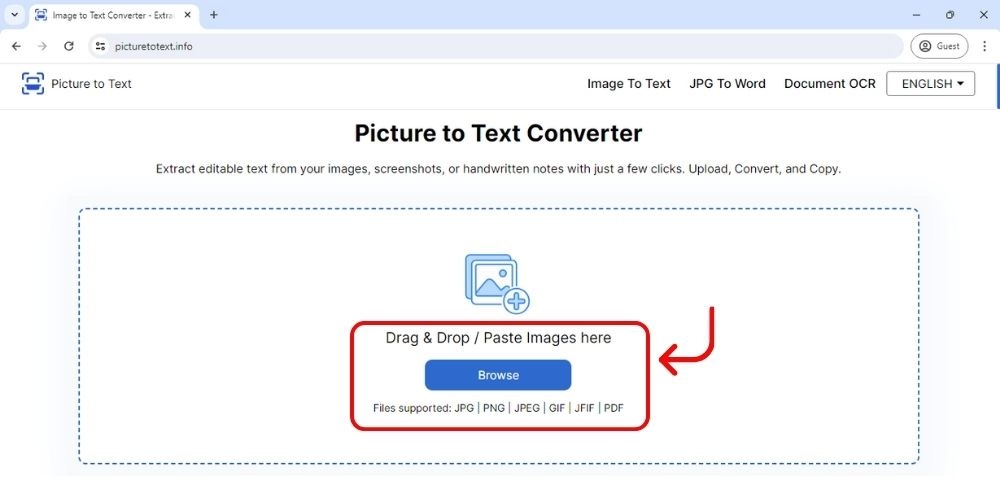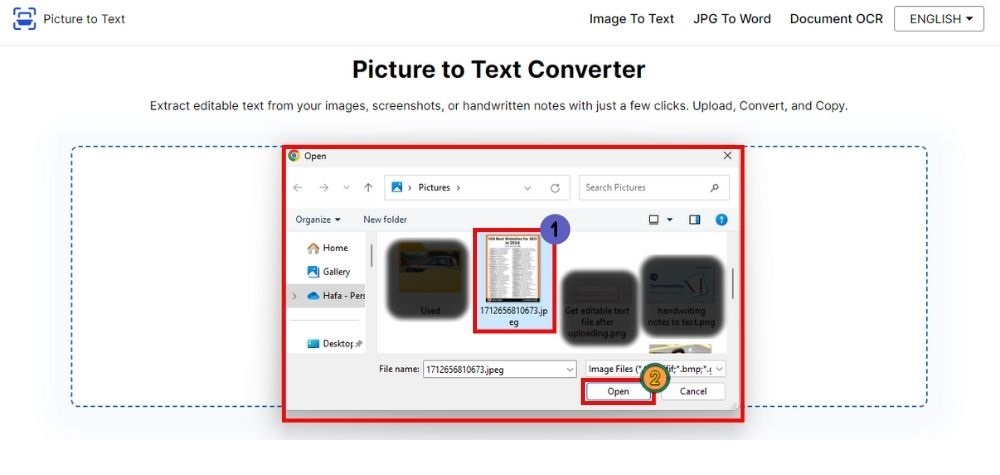Have you ever needed to extract information from an image but couldn’t just copy and paste the text?
Screenshots of scanned documents or pictures from past projects might contain crucial details. Extracting text from these images can save considerable time compared to manual retyping.
Fortunately, the OCR (Optical Character Recognition) technology can help you easily copy text from images.
This guide will help you understand how to copy text from an image and explain how OCR works.
What is OCR Technology?
Optical character recognition (OCR) is a technology that allows computers to understand the contents of image-based files like photos by identifying text and converting it into a format that can be selected, copied, edited, and searched.
OCR “reads” text embedded in images using advanced algorithms based on machine learning and artificial intelligence.
OCR first scans an image for detectable text elements through contours, shapes, and font recognition. It then analyzes each character using a vast library of templates to identify letters and translate them into editable text code. Some OCR systems can even replicate the original formatting details like font, size, and style.
How OCR Reads Text?
The scanning process breaks down into several steps: First, the OCR software isolates text regions from the background visuals through techniques like edge detection. It then segments character bitmaps into individual glyph shapes.

Pattern recognition algorithms compare these patterns to samples to recognize each character. Finally, the identified letters are combined into machine-encoded words, lines, and paragraphs.
Key Benefits of Using OCR
By harnessing the power of OCR, you can extract information trapped inside images and make it instantly available for editing, copying, searching, and sharing. This saves an enormous amount of time otherwise spent retyping content by hand. OCR also facilitates digital organization by converting paper files into digitized documents.
This image-to-text technology improves study efficiency and supports various tasks such as writing and teaching. It has business, education, and personal applications for enhanced accessibility and productivity.
How to Copy text from a Picture?
Images and screenshots are often a great way to capture and share information. However, the text within them cannot be edited, copied, or searched unless extracted from the image. This is where OCR technology comes in handy. This tool can quickly scan text from a photo or a screenshot.
Although there are multiple ways to convert images to text, this article will discuss one convenient tool, PictureToText, for scanning text from photos/images. PictureToText is a free web-based OCR tool that can grab text from images with a few clicks. It supports standard file formats like JPG, PNG, and PDF.
It is valuable when users need to scan text from several images simultaneously. The extracted text can then be copied directly or downloaded. With its simple one-click workflow and broad format support, PictureToText.info offers a handy solution for extracting text from images online.
Let's explore how you can effortlessly copy text from an Image with PictureToText.

Upload the image files you want to convert from your computer.

Click “Convert” to initiate the OCR process.

Once complete, you’ll see the extracted text on the results page.
To copy, simply highlight the text, press Ctrl+C, or click the copy icon.

You can also download it as a TXT file by clicking “Download All.”
Pros and Cons of using this tool
Here are some Pros and Cons of using PictureToText.
Pros:
PictureToText is very easy to use with its simple and intuitive interface.
It offers multiple language support and handles various image file formats.
As a free service, it provides excellent value without hidden costs or obligations.
Cons:
However, you depend on an internet connection since it's an online tool.
The number of images that can be processed simultaneously is also limited for non-paying users.
While accurate overall, complex images may need to be interpreted more perfectly.
How to Get Text from Multiple Image Files
Extracting text from a batch of images can save you much more time than converting them individually. PicturetoText allows uploading up to 5 images at once as a free user for bundled OCR. Here are two effective methods:
Select and Upload Multiple Images at once
You can select multiple photos on your computer and add them to the uploader simultaneously. The tool will then concurrently extract text from each image in the background. Once complete, you can access recognized text from all pictures together for efficient copying or downloading.
Covert Images to PDF and then Extract Text
As an alternative, first combine multiple JPEGs, PNGs, or other file types into a single PDF document using a free conversion program. Then, upload this merged PDF to picturetotext.info’s document OCR, extracting text from all embedded images in one go. This method maintains the original file structure while still allowing batch text retrieval.
Use Cases of Image-to-Text Conversion
Our lives are filled with images containing valuable information we may need for various activities. Here are some scenarios where using OCR comes in handy:
🧑🏻🎓Students can convert handwritten class notes and assignment snapshots into organized digital texts for easy reference during exams.
🧑💼Professionals can retrieve text from paperwork such as invoices, contracts, and manuals or design mockups for reporting and record-keeping purposes.
🕵🏻Researchers can seamlessly extract passages from photos of study materials, publications, or historic archives.
👨🏽💻Writers can access quotes, insights, and data points from visual sources, citations, and research papers to weave into stories and content.
✈️Travelers can translate signboards, menus, and instructions captured on the go using their phone camera.
Conclusion
In today’s digital world, the ability to extract text from images opens many doors. With advanced yet freely available OCR tools, unlocking information embedded in photos has become incredibly easy and optimized for productivity.
Whether you need to repurpose old files, work with visual assets, or simply copy a snippet - leveraging this technology can help you save substantial time and effort. You now understand how OCR works and how to harness its power for your tasks and projects. Feel free to reach out if you have any other questions!